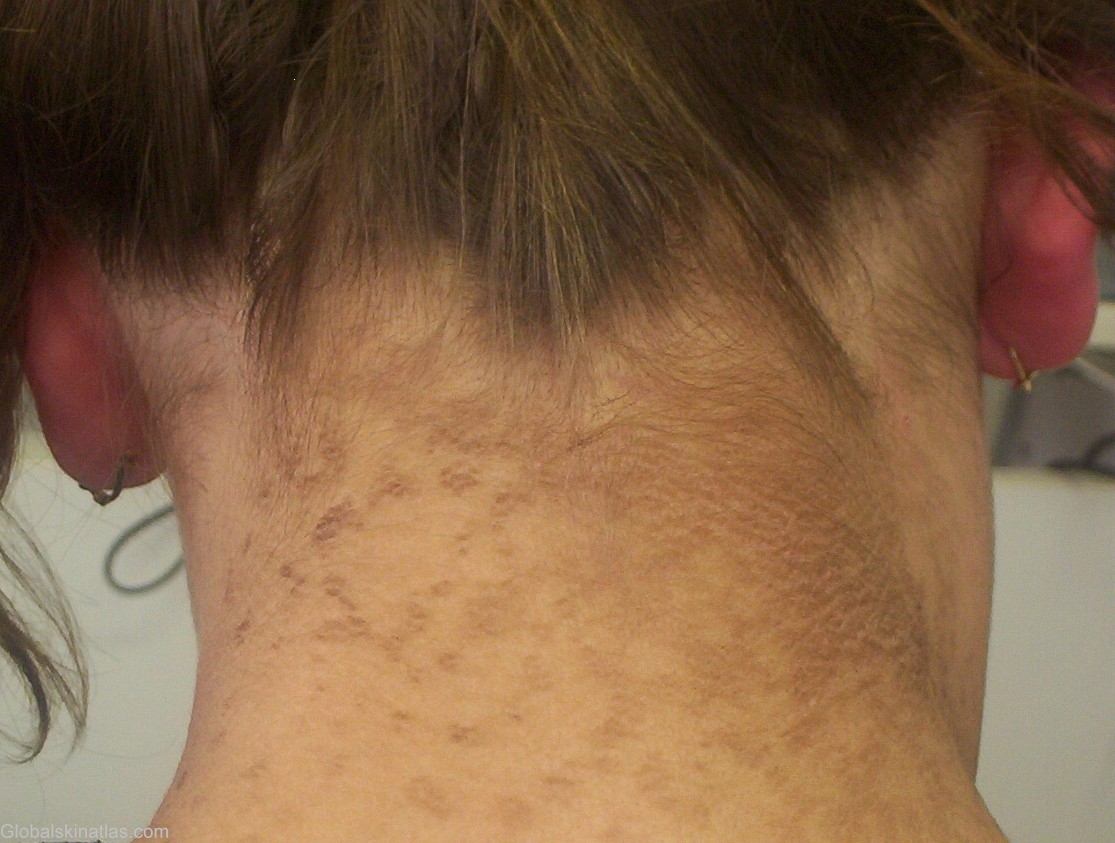

Diagnosis: Acanthosis nigricans
Description: Gray-brown, velvety thickening of the skin with increased skinfold markings
Morphology: Hyperpigmentation
Site: Neck nape
Sex: F
Age: 15
Type: Clinical
Submitted By: Mehravaran Mehrdad
Differential DiagnosisHistory:
Acanthosis nigricans is characterized by hyperpigmentation and papillary hypertrohpy, which are symetrically distributed. Clinically, acanthosis nigricans is manifested as a gray-brown, symetrical, velvety thickening of the skin with increased skinfold markings. The most common sites of involvement are the axillae, base of the neck, groin, and antecubital fossa. However, there can be generalized skin involvement including the mucous membranes. Pruritus is also a feature of acanthosis nigricans. There are three typical types of acanthosis nigricans which include: · Type I: Malignant Acanthosis Nigricans. The most common causes are associated with adenocarcinoma, especially GI tract (60% stomach), lung, and breast, less often the gallbladder, pancreas, esophagus, liver, prostate, kidney, colon, rectum, uterus, and ovaries. Other types of cancer, testicular carcinoma, and lymphomas may be seen also. A few cases of this malignant type have been observed in childhood, but most of the cases begin after or in adulthood. This type should be highly suspected if widespread lesions develop in a nonobese male over 40 years of age. · Type II: Familial Acanthosis Nigricans. · Type III: Acanthosis Nigricans Associated with Obesity, Insulin-resistant States, and Endocrinopathy.This is the commonest variety of acanthosis nigricans. It presents as a grayish, velvety thickening of the skin of the sides of the neck, axillae and groins. It occurs in obesity, with or without endocrine disorders, and in acromegaly and gigantism, Stein-Leventhal syndrome, Cushing’s syndrome, Addison’s disease, hyperandrogenic states, hypogonadal syndromes and various well.recognized insulin-resistant states.
A 15-year-old obese girl who's chief complaint was of diffuse, gray-brown papillomatous lesions which started one year before. Medical history revealed hypertension. Meanwhile patient is under investigation for metabolic or endocrinopathic disorders.